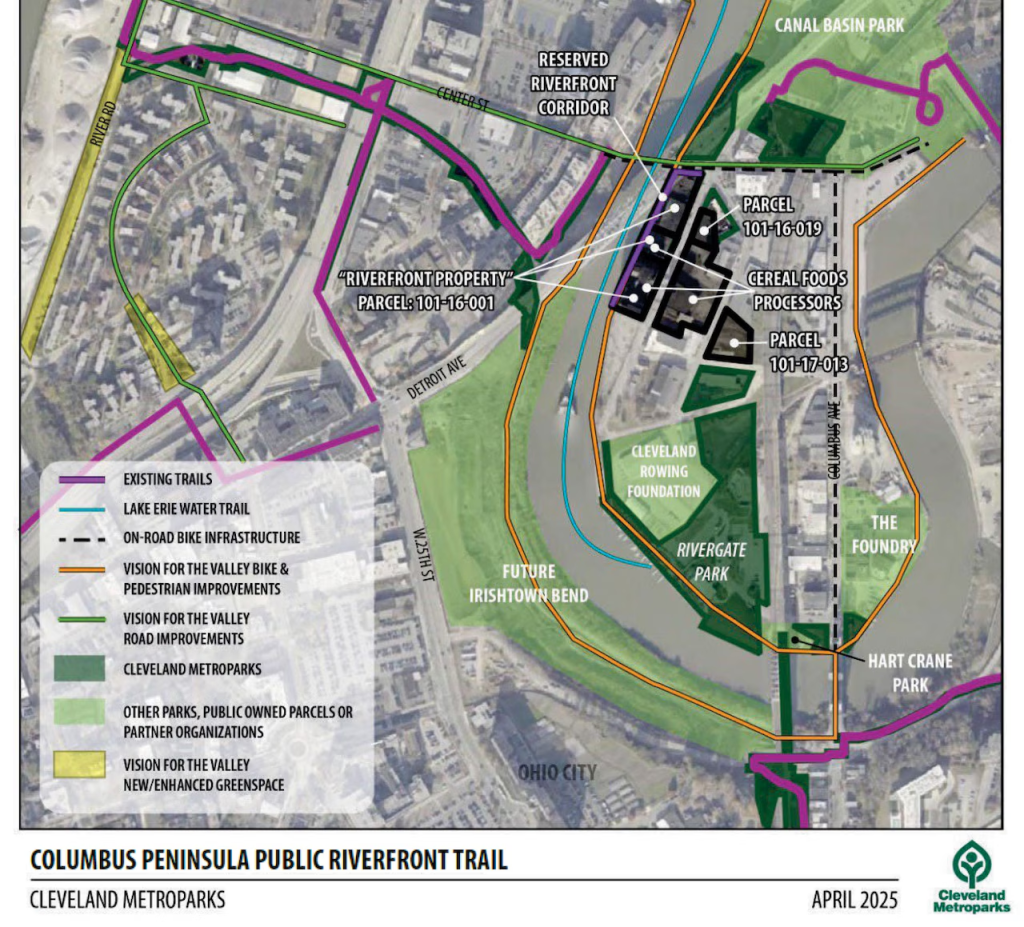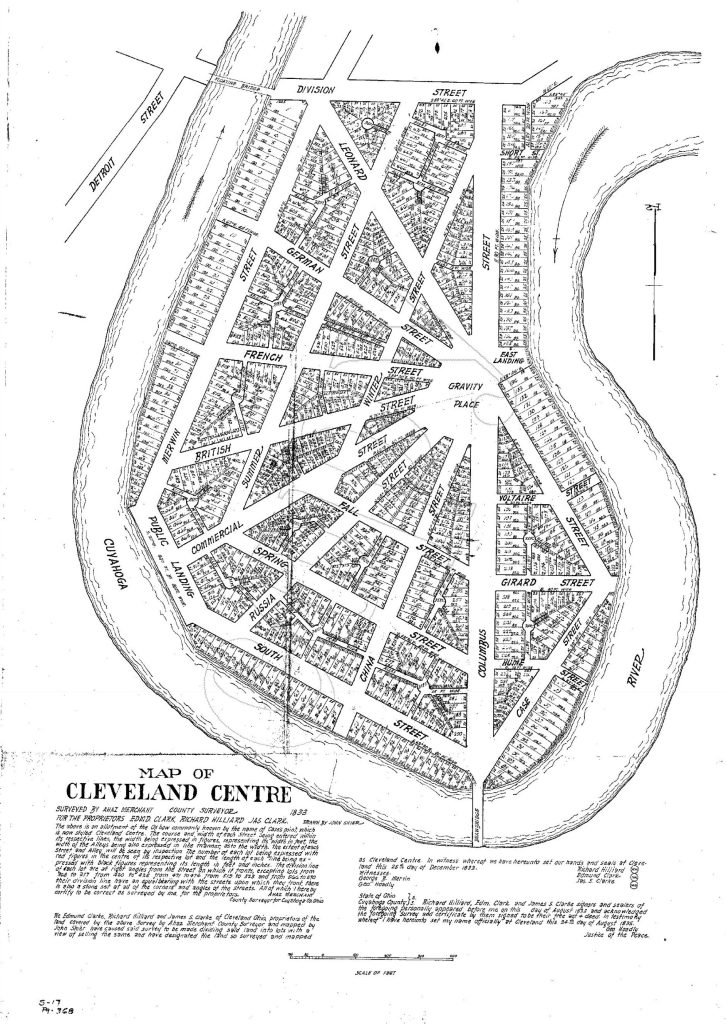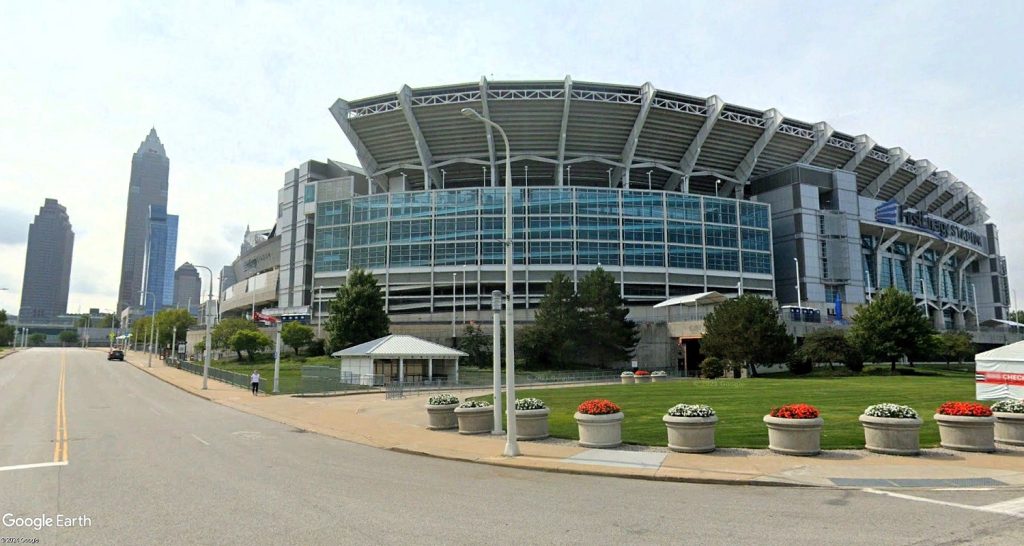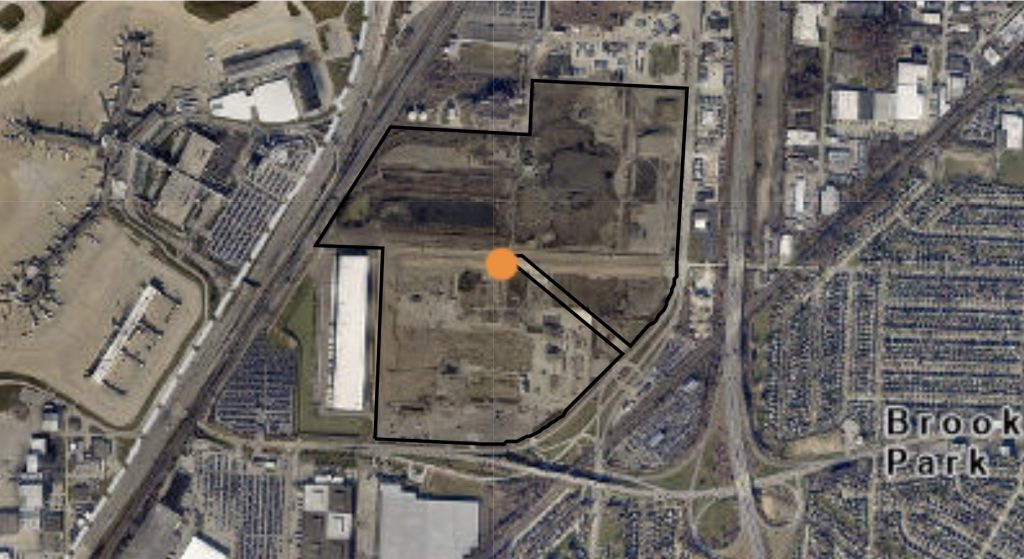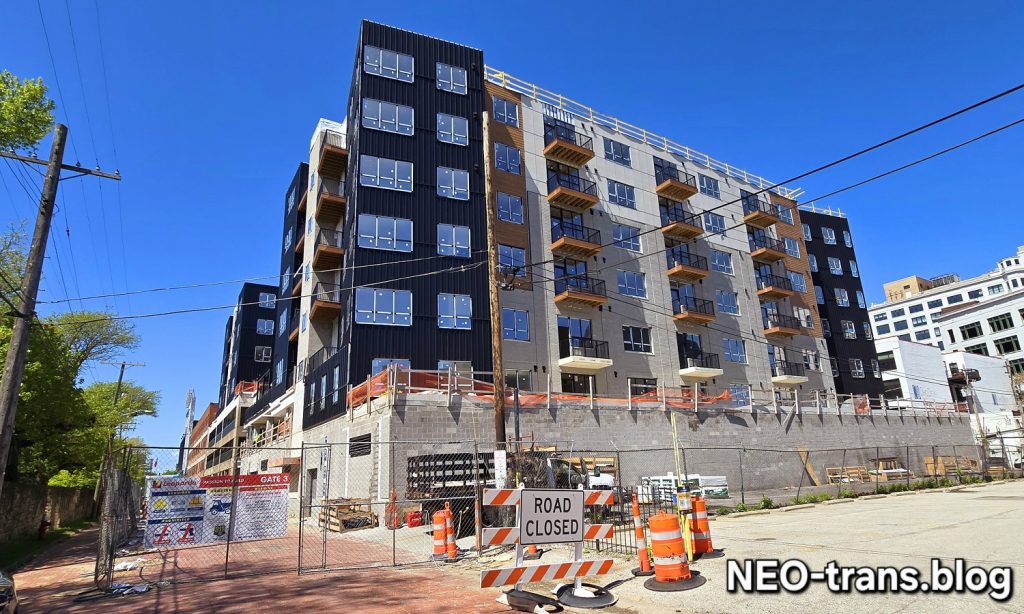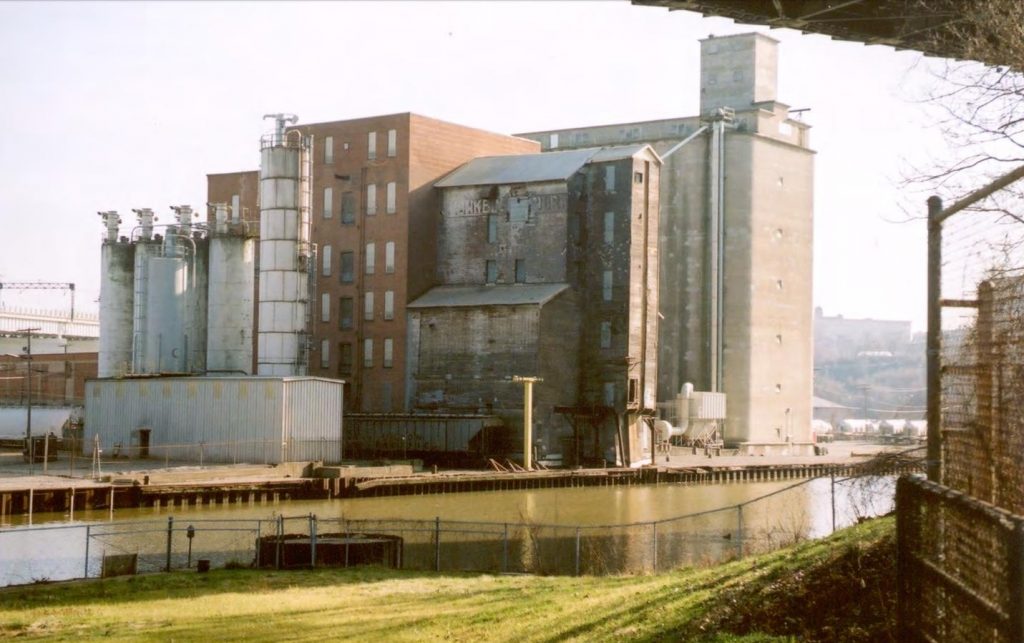
A centerpiece of the properties included in a request for proposals by the Cleveland Metroparks is this 19th-century flour mill that closed in 2020. But there are other, even older structures located away from the river that could be attractive for redevelopment in a public-private partnership that is now being sought (NPS). CLICK IMAGES TO ENLARGE THEM.
Former flour mill, seafood biz part of RFP
When the Cleveland Metroparks began seeking state funds in January to help clean up and possibly demolish a 19th-century flour mill in the Flats, there was a bit of a pushback. The Metroparks, which has done a lot of demolition along the Cuyahoga River to create public spaces, was urged by preservationists to take a different approach here.
Based on a request for proposals (RFP) posted yesterday by the Metroparks on its open bids page of its Web site, the parks board was listening. The RFP for a “Columbus Peninsula Riverfront Development Partnership” not only includes the closed flour mill, but also multiple neighboring buildings that could be the focus of an “impactful development.”
Some of those buildings date back to 1856. And the fan-shaped layout of streets on the Columbus Road peninsula goes back even further — to nearly 200 years ago when this area was envisioned to be a world trade center of mercantilists and residences called Cleveland Centre. It was positioned where lake shipping and the then-new Ohio & Erie Canal would meet to spark the development of a major city.
“Cleveland Metroparks is seeking proposals from experienced real estate developers for the redevelopment or historic preservation/rehabilitation (or combination thereof) of property owned by Cleveland Metroparks in the Flats area of Downtown Cleveland, Ohio,” the RFP states. “Cleveland Metroparks views the selection of the proposer as a partnership to advance the development goals.”
There are 15 parcels now owned by the Metroparks that are a part of this RFP for the Columbus Road peninsula. However, the Metroparks will preserve a 30-foot-wide strip of land along the river to build a public trail extending from Settlers Landing on the north side of the Center Street Bridge. Proposals are due back by June 6.
Metroparks is seeking proposals that align with the core goals and values of the Metroparks, the Vision for the Valley plan, and of neighborhood entities. They are seeking mixed uses that enhance the Flats’ offerings, respects the Cleveland Centre Historic District, reuses historic structures if economically and structurally possible, responsive to the community, promotes sustainability, walking and alternative transportation access.
Properties for the RFP site were acquired in the last 15 months by the parks board but without a clear intent of how these properties were to be used. In May 2024, the Metroparks closed on a $4 million purchase of 1.24 acres of land from Marlin Investment Group LLC, owned by the Catanese family.
Since the sale, the family’s Catanese Classic Seafood has leased the land and eight buildings set on those parcels. The seafood business and its 80 jobs are relocating to Cleveland’s Collinwood neighborhood, a story broken by NEOtrans. There has been a seafood business on Merwin Avenue in the Flats, next to the Center Street bridge, for 92 years.
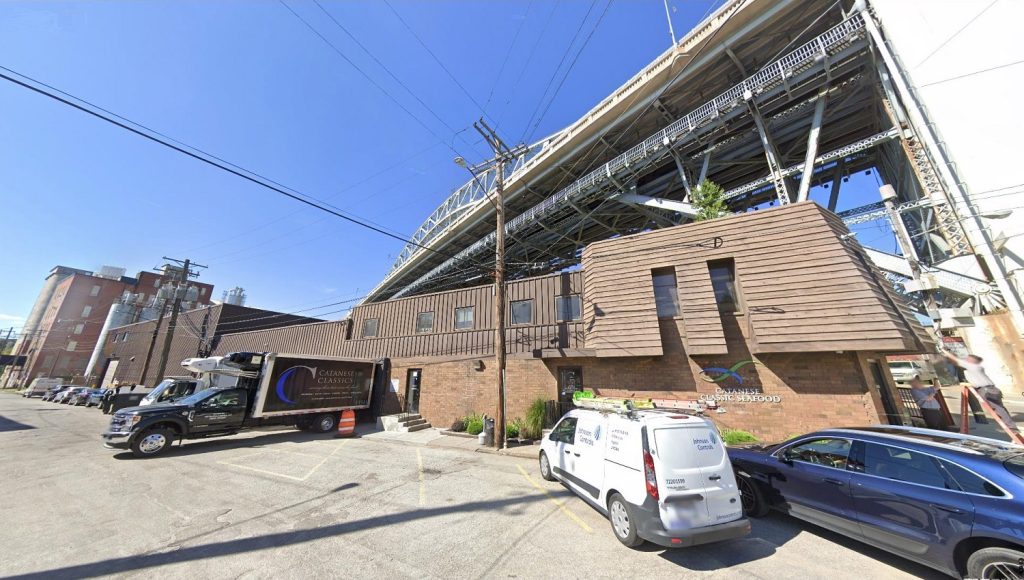
Catanese Classic Seafood and its predecessors have for 92 years operated a seafood business from this riverfront location at Merwin Avenue and Center Street in Cleveland’s Flats. The Cleveland Metroparks has acquired this complex and the Grain Craft flour mill in the background at left. Soaring overhead is the Detroit-Superior Bridge (Google).
In January, the Metroparks began the process to request $2.2 million in Ohio Brownfield Program funds for the remediation and possible demolition of the neighboring Cereal Food Processors’ flour mill, leased to Grain Craft Inc. Those funds will be matched by about $1.8 million from the Metroparks, some of which was already spent for site assessments and property title work.
Among those urging a different approach was historic preservation consultant Tom Yablonsky. He attended a Metroparks board meeting in January where he learned the regional parks system was open to the idea of a public-private partnership to redevelop at least some of the historic properties.
A dozen years ago, Yablonsky, vice chair of the Canalway Partners, led an effort to get the Cleveland Centre on Columbus Road peninsula and its 38 contributing buildings listed on the National Register of Historic Places. The area extends north to and including the Baltimore & Ohio Railroad depot at Canal and Carter roads.
Not only does its listing on the register offer a layer of protection to discourage demolition of those structures, it also makes them eligible for state and federal historic tax credits to fix them up. A copy of the nomination document is available here.
“I know a few people who might be interested in this (RFP),” Yablonsky said, referring to real estate developers who focus on historic rehabilitation projects. “The Brownfield funds (sought by the Metroparks for demolition) can also be used as part of a capital stack for redeveloping the mill.”
NEOtrans was also first to report on the mill’s closure in 2020. The mill is located on a site with remnants of an 1856 buhrstone mill. A rounded buhrstone has “teeth” carved into it to aid in crushing grains into fine powder. This mill facility has been operating since the 1870s although the oldest existing structure, a seven-story brick building, dates to 1882.
Next to it is a substantial mass of 22 grain silos. The five-by-nine silos, built in 1937, overlook the river. They are about 155 feet tall, equal to a 14- or 15-story building. They could be converted into apartments or a hotel like Quaker Square in Akron or the RiverWorks redevelopment in Buffalo, preservationist Steve McQuillin suggested.
END

